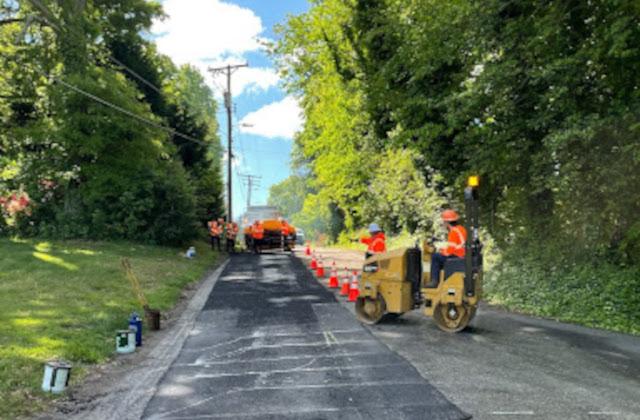Repair Techniques
Potholes occur when moisture penetrates cracks in the asphalt surface of a road or driveway. Cold weather freezes the water and causes it to expand. A pothole forms when dirt and gravel is forced out leaving a hole. The ice eventually melts and the stressed asphalt becomes a pothole. Asphalt Protectors will cut out the pothole area, clean it and use an asphalt filling appropriate for the repaired area.
Infrared patching is a fast, cost-effective method that works well for minor surface repairs. The process consists of heating up an area of pavement to make it workable, raking the existing asphalt material, adding some new to cover any inconsistencies, and rolling to finish. It creates seamless transitions between new and existing asphalt and allows cold weather patching when supplies from the asphalt plant are not available.
Skim patch patches are used to fill depressions, in which case the patch could be as thick as three or four inches. A skim patch differs from removal and replacement because existing asphalt is not removed during skim patching. This type of repair should only be used when there is no base failure, to correct drainage. Skim Patch is also used to isolate asphalt that is Spaulding (loose & rough) to extend the life of the asphalt (3-10 Yrs.).Skim patches generally use a fine sand aggregate as opposed to coarse aggregate because the edges of the patch are “feathered” out to zero thickness. Usually skin patching is used to improve the appearance of pavement or stop water penetration. Skim patches are generally 1 ½ inches or less in thickness. In some cases this may be a temporary patch.
When an asphalt pavement surface deteriorates to the point of needing repair, an asphalt patch is an effective solution. A standard asphalt patch consists of a new layer of asphalt applied over the existing asphalt surface. The thickness of an overlay should range 1 ½ to 2 inches, but type and amount of traffic as well as existing pavement condition are also considered. The existing asphalt surface may be milled if grades need to be maintained or altered. Milling is a process by which a machine is used to plane the pavement surface to an appropriate depth before it is covered with the new layer. Once the milling is finished and the overlay is completed, the road is left with a brand new surface, ready for pavement marking.
Utilizing a milling machine, deteriorated asphalt is removed by grinding it into small bits. Milling depth is determined by the thickness of new asphalt to be applied. Millings are then recycled at the asphalt plant and incorporated into future asphalt mix supply. Drainage and grade considerations help determine if this approach is a valid option.
When asphalt pavement surface deterioration is severe but complete asphalt replacement is not needed, mill and patch can be an effective solution. With this process the top layer of asphalt is ground down (milled) and cleaned thoroughly to ensure adhesion with the bonding material and new asphalt patch. Asphalt is milled to a level that will integrate the patch with surrounding asphalt, concrete curb, gutters, or any other structures. The mill and patch process may also be used to resolve water flow issues.
Severely degraded asphalt or subgrade deficiencies may require complete removal of part or all of the pavement and base material. After excavation and removal, pre-existing conditions in the subgrade such as excess moisture, shallow utility lines, missing aggregate base, or incorrectly prepared subgrade may require additional steps in the base preparation. These conditions are usually not discovered until the overlying asphalt is removed. When pre-existing conditions have been corrected, new aggregate is supplied as needed and re-compacted. The new asphalt is then placed and compacted with vibratory rollers to finish the process.
Submit a Request
Lookup up the Road District where the issue is located using the tool below for contact information.



